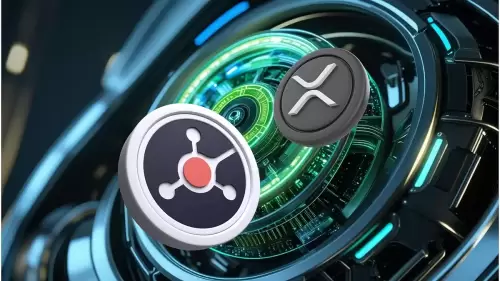 |
|
 |
|
 |
|
 |
|
 |
|
 |
|
 |
|
 |
|
 |
|
 |
|
 |
|
 |
|
 |
|
 |
|
 |
|

If users want to maximize profits, they can maximize the value of stablecoins through yield-based stablecoins.
Currently, there are few stablecoins that can generate yield, and these stablecoins generate income through DeFi activities, derivative strategies, or RWA investments. According to Messari data, yield stablecoins account for 6% of the $240 billion market value of stablecoins.
As demand grows, JPMorgan believes that a 50% share is not out of reach.
Yield stablecoins are minted by depositing collateral into the protocol. The deposited funds are invested in yield strategies, and the yield is shared by the holders. This is like a traditional bank lending out deposited funds and sharing the interest with depositors, except that the interest on yield stablecoins is higher.
Among the more well-known yield-bearing stablecoins are Ethena's USDe, Maker's sDAI, and Ondo's USDY.
Among the more well-known yield-bearing stablecoins are Ethena's USDe, Maker's sDAI, and Ondo's USDY.
Ethena maintains the value of its stablecoin and generates yield through delta-neutral hedging.
USDe is minted by depositing the pledged ETH (stETH) into the Ethena protocol. Afterwards, the ETH position is hedged by shorting.
In addition to the income from stETH (currently 2.76% annual interest rate), the positive funding rate for short selling will also generate income, and Ethena will distribute these income to users who pledge USDe in exchange for sUSDe (annual interest rate of 5%).
Spark (sDAI)
sDAI is generated by depositing DAI into Maker’s DAI Savings Rate (DSR) contract. The current annualized yield is 3.25%.
The yield is accumulated through interest on the DSR (the interest rate is determined by MakerDAO). sDAI can also be traded or used in DeFi like other stablecoins.
Ondo Finance (USDY)
Ondo issues USDY with USDC deposits. The deposited assets are used to purchase low-risk assets such as treasury bills (about 4-5% annual interest), and most of the interest is shared by USDY holders.
USDY's yield is set once a month and remains stable throughout the month. This month's annualized yield is 4.25%.
Note: USDY's yield is reflected in the token price, not the quantity. This is why USDY is always above $1.
BlackRock (BUIDL)
The BUIDL stablecoin represents ownership in a tokenized money market fund (MMF) managed by BlackRock.
The fund invests in cash and other instruments, such as short-term Treasury bills and repurchase agreements, and distributes interest to BUIDL holders.
The fund's yield is calculated on a daily basis but is distributed to BUIDL holders on a monthly basis.
5. Figure Markets (YLDS)
YLDS is the first yield-generating stablecoin registered as a public security with the U.S. SEC.
Figure Markets generates returns by investing in the same securities held by prime MMFs, which are riskier than tokenized government-backed MMFs.
YLDS offers an annual interest rate of 3.79%. Interest accrues daily and is paid monthly in USD or YLDS tokens.
6. Sky (USDS/sUSDS)
USDS is a renamed version of DAI and can be minted by depositing eligible assets through Sky Protocol.
It can be used in DeFi and can also earn income from Sky Protocol through the Sky Savings Rate (SSR) contract. sUSDS is issued based on USDS deposits with an annual interest rate of 4.5%.
Usually, the interest rate on sUSDS is lower than that on USDe, but the advantage of USDS is that it can be used in more DeFi protocols.
7.Usual(USD0)
USD0 is fully backed by real-world assets (RWAs) such as Treasuries, and is minted by depositing USDC or eligible RWAs as collateral on the Usual platform.
Users can also stake USD0 on Curve to get USD0++ (annual interest rate of 0.08%). USD0++ can be used in DeFi, and the income is distributed in the form of USUAL tokens (annual interest rate of 13%).
Note: To obtain USD0++ income, a 4-year pledge is required.
8. Mountain Protocol (USDM)
Mountain Protocol generates yield by investing in short-term U.S. Treasury bonds, but USDM is specifically for non-U.S. users.
The proceeds from these U.S. Treasury bonds are distributed to USDM holders through a daily reconciliation system, so balances
免責事項:info@kdj.com
提供される情報は取引に関するアドバイスではありません。 kdj.com は、この記事で提供される情報に基づいて行われた投資に対して一切の責任を負いません。暗号通貨は変動性が高いため、十分な調査を行った上で慎重に投資することを強くお勧めします。
このウェブサイトで使用されているコンテンツが著作権を侵害していると思われる場合は、直ちに当社 (info@kdj.com) までご連絡ください。速やかに削除させていただきます。

























































